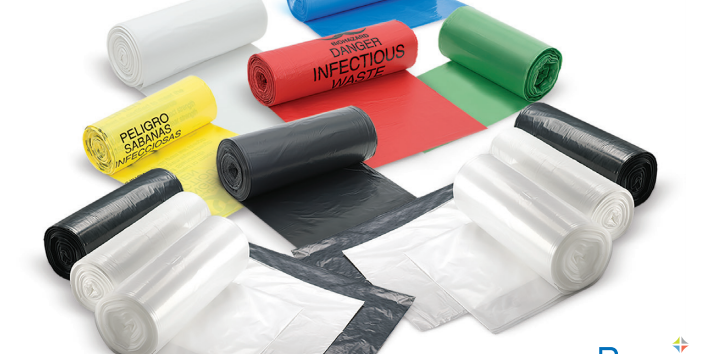First, you put trash in them. I don’t imagine you came to this site to learn that crucial piece of information.
What are main type of can liners – Linear Low Density Polyethylene (LLDPE) & High Density Polyethylene (HDPE).
Linear Low Density can liners are highly resistant to tears and punctures. These traits makes it ideal for applications where extra stretch and strength is needed. If you are working with waste that has sharp edges or jagged LLDPE is the liner for you. A few other useful features and benefits are:
- Multi-purpose applications
- Available in multiple colors – clear, gray, and white in the AEP Elephant LLDPE can liners
- Most common type of liner used in the industry
High Density can liners are stronger, much more temperature resistant, and have advantages with moisture protection. Lightweight trash and paper are perfect materials to be used with this type of liner. HDPE can liners will are more prone to tearing if punctured. The other features and benefits are:
- 3x more durable than ordinary polyethylene liners of the same thickness
- These liners require significantly less petroleum based raw materials to create
- Can help reduce your storage, shipping, and warehousing costs
- Offers wide range of temperature resistance from -40 degrees to +212
Fun with Gauge – how do you describe the thickness of a can liner?
- Mils: Linear Low density liners are measured in Mils – based one hundred thousandths of an inch. For example, a .75 mil liner would be 75 thousandths of an inch thick .
- Microns: High density liners are measured in Microns – based on one thousandth of a Millimeter.
When our salespeople work with customers, we like to educate them with the information above. Additionally, we use this nifty tool to help outfit the customer with the right can liner using this calculator:
This tool helps convert back and forth from Mils to Microns. Additionally, it is important to know the correct case weight based on the gauge and size of the can liner.

